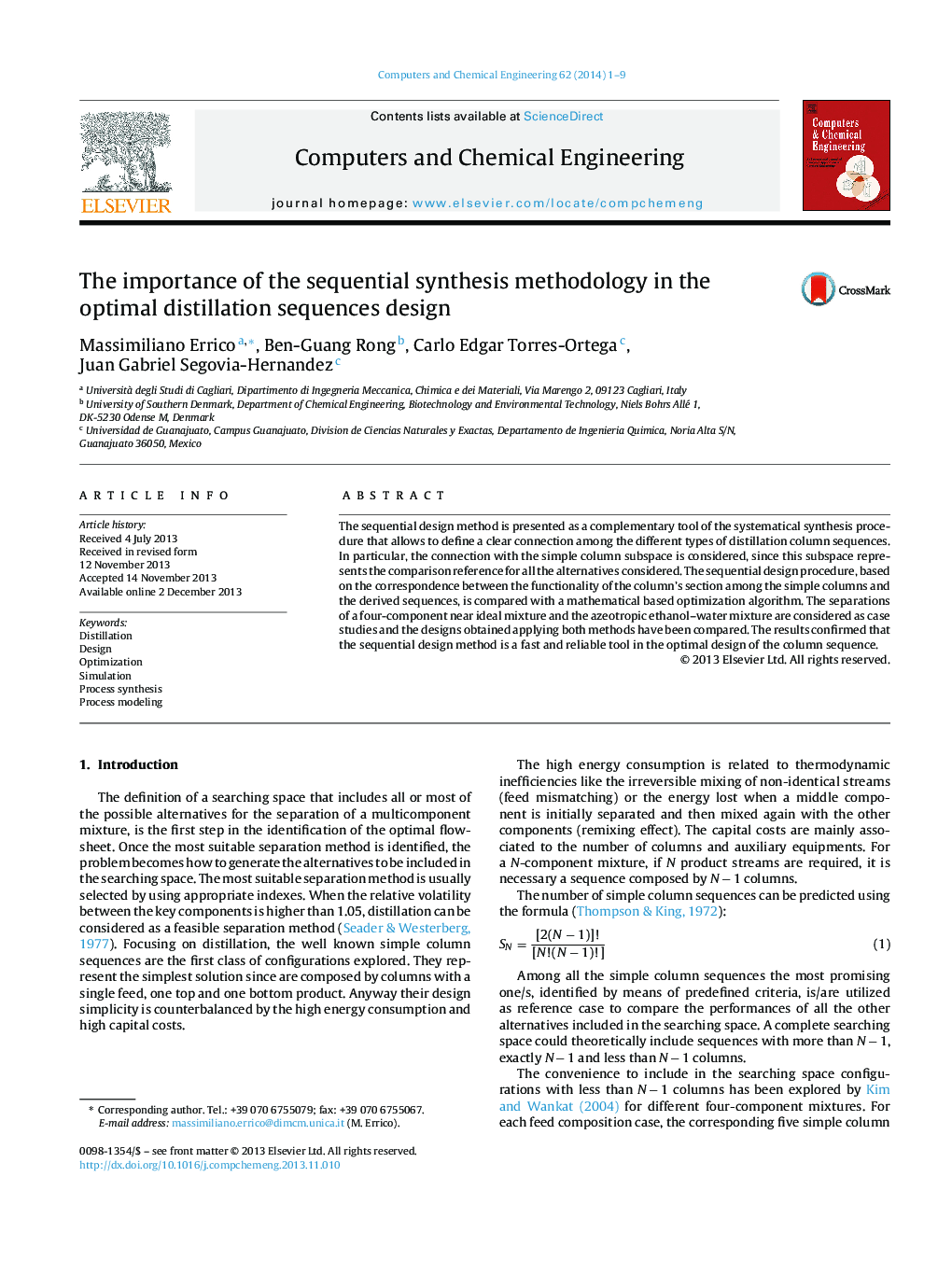| کد مقاله | کد نشریه | سال انتشار | مقاله انگلیسی | نسخه تمام متن |
|---|---|---|---|---|
| 6595780 | 458544 | 2014 | 9 صفحه PDF | دانلود رایگان |
عنوان انگلیسی مقاله ISI
The importance of the sequential synthesis methodology in the optimal distillation sequences design
ترجمه فارسی عنوان
اهمیت روش سنتز پیوسته در طراحی توالی تقطیر مطلوب
دانلود مقاله + سفارش ترجمه
دانلود مقاله ISI انگلیسی
رایگان برای ایرانیان
کلمات کلیدی
تقطیر، طرح، بهینه سازی، شبیه سازی، سنتز فرایند، مدل سازی فرآیند،
ترجمه چکیده
روش طراحی متوالی به عنوان ابزار مکمل روش سنتز سیستماتیک ارائه شده است که اجازه می دهد تعریف یک ارتباط روشن بین انواع مختلف توالی ستون تقطیر. به طور خاص، ارتباط با زیر فضای ستون ساده در نظر گرفته شده است، از آنجا که این زیرمجموعه نشان دهنده مرجع مقایسه برای تمام گزینه های در نظر گرفته شده است. روش طراحی پی در پی بر اساس مکاتبات بین عملکرد ستون در میان ستون های ساده و توالی های مشتق شده با الگوریتم بهینه سازی مبتنی بر ریاضی مقایسه می شود. جداسازی مخلوط ایده آل چهار جزء و مخلوط اتئتروپیک اتانول-آب به عنوان مطالعات موردی در نظر گرفته شده و طرح های به دست آمده با استفاده از هر دو روش مقایسه شده است. نتایج تایید شده است که روش طراحی متوالی یک ابزار سریع و قابل اعتماد در طراحی مطلوب توالی ستون است.
موضوعات مرتبط
مهندسی و علوم پایه
مهندسی شیمی
مهندسی شیمی (عمومی)
چکیده انگلیسی
The sequential design method is presented as a complementary tool of the systematical synthesis procedure that allows to define a clear connection among the different types of distillation column sequences. In particular, the connection with the simple column subspace is considered, since this subspace represents the comparison reference for all the alternatives considered. The sequential design procedure, based on the correspondence between the functionality of the column's section among the simple columns and the derived sequences, is compared with a mathematical based optimization algorithm. The separations of a four-component near ideal mixture and the azeotropic ethanol-water mixture are considered as case studies and the designs obtained applying both methods have been compared. The results confirmed that the sequential design method is a fast and reliable tool in the optimal design of the column sequence.
ناشر
Database: Elsevier - ScienceDirect (ساینس دایرکت)
Journal: Computers & Chemical Engineering - Volume 62, 5 March 2014, Pages 1-9
Journal: Computers & Chemical Engineering - Volume 62, 5 March 2014, Pages 1-9
نویسندگان
Massimiliano Errico, Ben-Guang Rong, Carlo Edgar Torres-Ortega, Juan Gabriel Segovia-Hernandez,
